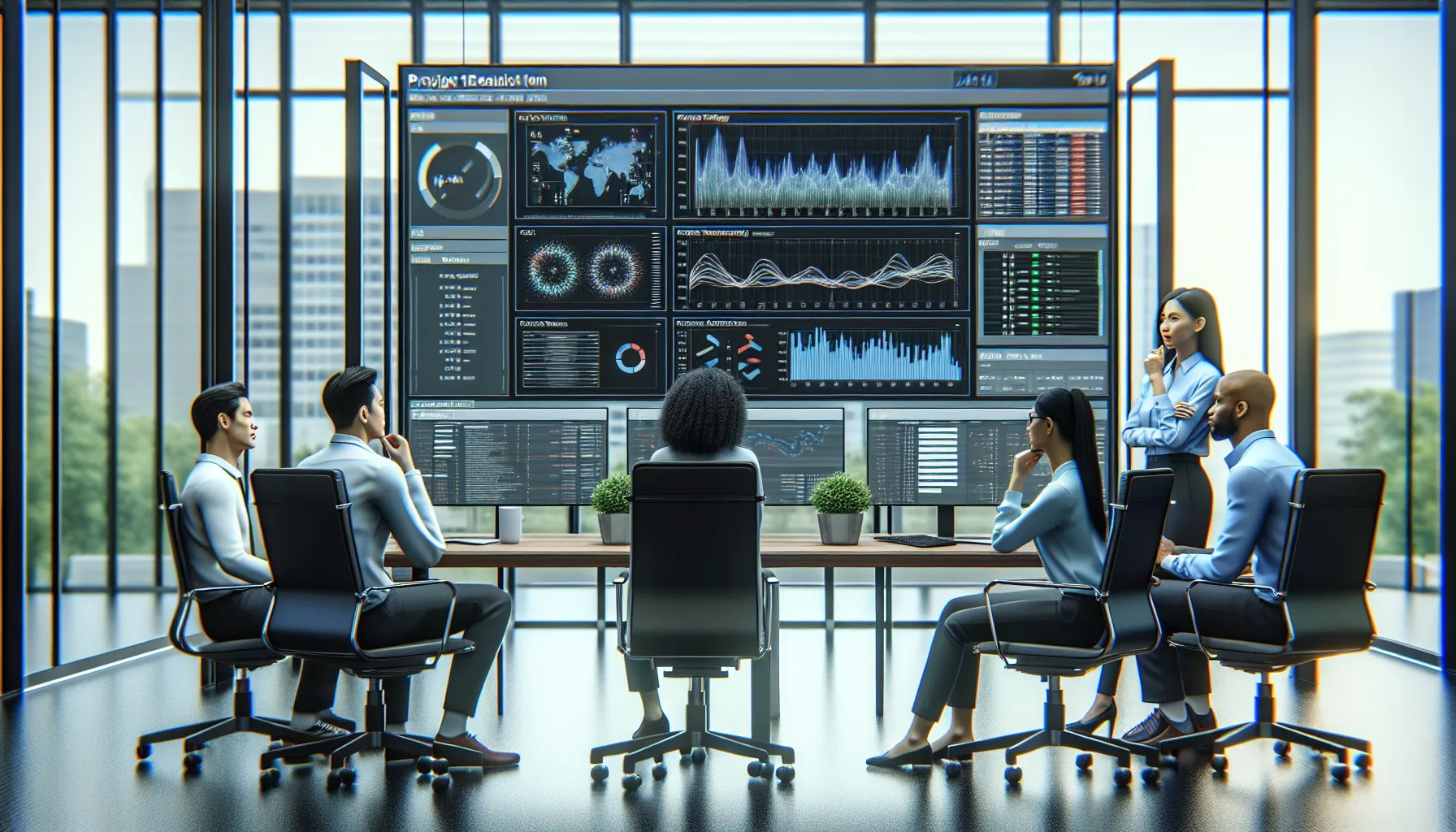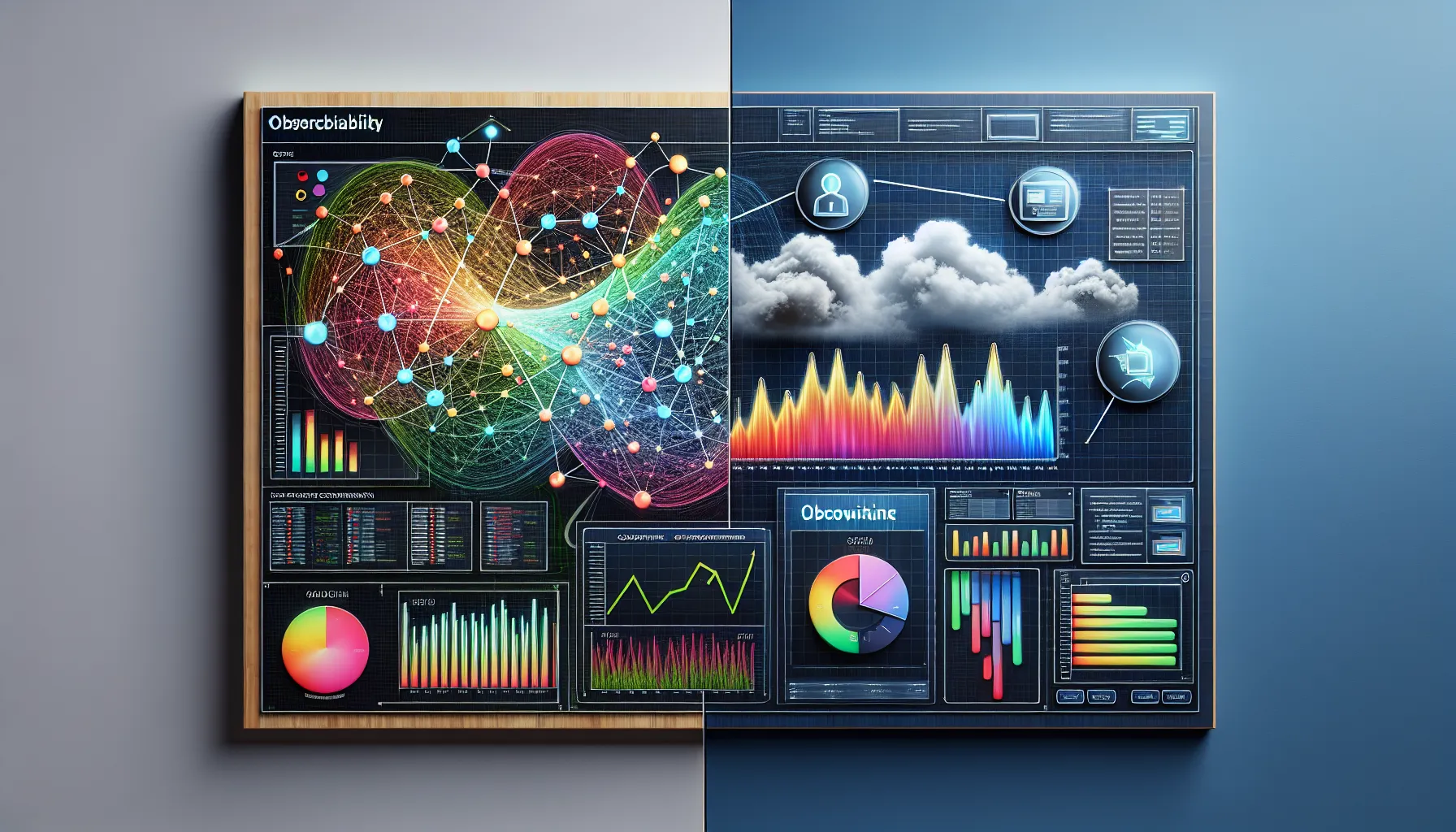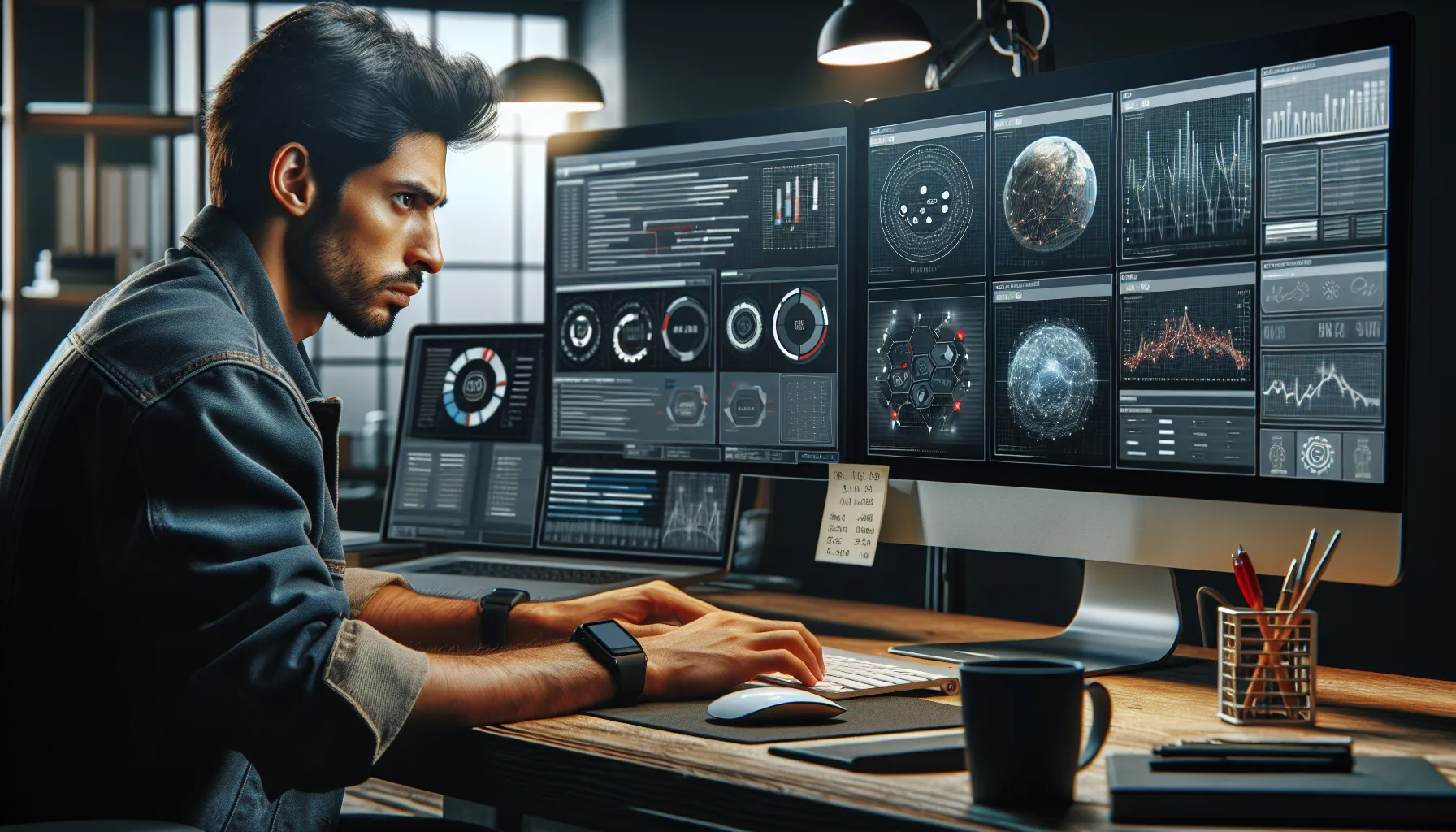Key Takeaways
- Observability and monitoring are distinct but complementary concepts, with monitoring focusing on predefined metrics and observability uncovering unknown issues in complex systems.
- Observability leverages logs, metrics, and traces to provide a holistic understanding of system behavior, making it essential for distributed architectures like microservices.
- Monitoring prioritizes stability by collecting structured data, triggering alerts, and visualizing performance metrics, offering efficiency for detecting known issues.
- Observability offers deeper insights for diagnosing root causes, optimizing performance, and addressing unpredictable system behavior, especially in dynamic environments like cloud-native systems.
- Both observability and monitoring should be used together for robust system management, balancing routine performance tracking with advanced troubleshooting capabilities.
- The choice between observability, monitoring, or both depends on system complexity, scalability, and specific challenges, ensuring resilience and efficiency through a tailored approach.
When I first heard about observability and monitoring, they sounded like two sides of the same coin. It’s easy to assume they’re interchangeable, but as I dug deeper, I realized they serve distinct purposes in understanding and maintaining systems. While monitoring focuses on tracking specific metrics or issues, observability takes a broader approach, helping us uncover the unknowns within complex systems.
I’ve often found myself wondering why both concepts are so essential in today’s fast-paced tech world. The truth is, modern systems are more intricate than ever, and relying on one without the other can leave you with blind spots. By understanding the differences and how they complement each other, we can build more resilient and efficient systems.
Understanding Observability
Observability provides insights into system behavior by analyzing outputs to understand internal states. Unlike monitoring, it focuses on answering unanticipated questions in dynamic environments.
Definition And Key Concepts
Observability assesses how well internal system states can be inferred from external outputs. It’s rooted in control theory and helps pinpoint unexpected issues in complex systems. I rely on it to identify bottlenecks, diagnose root causes, and foresee potential risks that monitoring alone may overlook.
Key attributes include flexibility and adaptability. Observability allows analysis without predefined metrics and is essential in distributed architectures like microservices. It helps me gain deep visibility into how each component interacts under real-world conditions.
The Three Pillars Of Observability
Observability consists of three core data types: logs, metrics, and traces.
- Logs: Capture event records with detailed context. I use them to review specific incidents or anomalies.
- Metrics: Represent aggregated, numerical data about system performance. These make trends, patterns, and abnormalities clearer to spot.
- Traces: Follow requests across system components. Traces help map dependencies and locate failures in workflows.
Combining all three reveals a complete picture of system behavior and facilitates actionable insights in complex setups.
Understanding Monitoring

Monitoring focuses on tracking system performance and detecting predefined issues to maintain stability. It uses structured data to alert teams when something goes wrong.
Definition And Key Concepts
Monitoring refers to observing system performance by collecting and analyzing specific metrics like CPU usage, memory consumption, or network latency. It identifies issues by comparing real-time data against predefined thresholds or baselines. Key concepts include:
- Alerting: Notifications triggered by breaches of set thresholds, like high CPU utilization.
- Dashboards: Visualizations that provide real-time views of system health for easy interpretation.
- Metrics Collection: Periodic gathering of quantifiable system data to assess performance over time.
Monitoring ensures critical indicators are consistently checked, helping teams resolve known problems efficiently.
Traditional Vs Modern Monitoring
Traditional monitoring aimed at static, on-premise systems with fewer variables. It used rigid thresholds and focused on individual components. For example, traditional tools measured server uptime or static application logs.
Modern monitoring handles dynamic, distributed environments like microservices or cloud systems. It incorporates automated techniques, real-time data streaming, and integration with observability tools for deeper insights. This shift allows teams to analyze the relationships between varied system elements.
Observability Vs Monitoring: Key Differences

Observability and monitoring address different aspects of system management, despite being interconnected. Observability uncovers unknown issues by analyzing outputs, while monitoring focuses on detecting predefined ones using structured metrics.
Depth Of Insights
Observability provides deeper insights by enabling the analysis of external outputs to infer system states. It supports diagnosing unpredictable issues and understanding how components interact, especially in distributed systems like microservices. Monitoring, in contrast, offers narrower insight, focusing on predetermined metrics and thresholds such as CPU usage or request latencies. This limits its ability to identify unknown fault patterns.
Use Cases And Objectives
Observability is essential for diagnosing unknown anomalies and optimizing system performance dynamically. Teams use it in complex environments like cloud-native applications to foresee risks and resolve root causes. Monitoring is applied for stability and uptime, designed to detect known issues, trigger alerts for specific events, and ensure SLA compliance. For example, monitoring might flag a database surpassing memory usage limits, while observability helps uncover why the issue occurred.
Tools And Technologies
Observability tools, such as OpenTelemetry and Honeycomb, offer capabilities to collect, correlate, and analyze logs, metrics, and traces. These tools emphasize context and flexibility. Monitoring solutions, such as Prometheus and Nagios, focus on efficient metrics collection, static dashboards, and threshold-based alerting for predefined scenarios. Both categories often integrate for a holistic approach to system health.
Why Observability Matters In Modern Systems

Modern systems are increasingly complex, with distributed architectures, microservices, and dynamic workloads. Observability offers deeper insights into system behavior, bridging gaps that traditional monitoring alone can’t address.
Benefits Over Traditional Monitoring
Observability goes beyond traditional monitoring by enabling a holistic view of system interactions. Traditional monitoring relies on predefined metrics and alerts focusing on known issues, but observability analyzes logs, metrics, and traces to uncover hidden patterns. This adaptability supports dynamic environments like containerized applications and serverless systems. For instance, while monitoring detects high CPU usage, observability evaluates its impact across services, offering proactive solutions.
Observability also enhances system performance optimization. By correlating data across different system layers, I can identify inefficiencies, make informed decisions, and strengthen resource allocation without relying solely on static thresholds. This versatility makes observability a critical factor in managing hyper-complex infrastructures.
Role In Troubleshooting And Incident Management
Observability accelerates root cause analysis during incidents by providing real-time, actionable insights. Static monitoring tools might indicate an issue, but observability digs into the “why” by linking traces, logs, and metrics for a comprehensive understanding. For example, traces can pinpoint where requests fail within a distributed system, while logs add context to those failures.
This capability reduces mean time to resolution (MTTR) by allowing me to identify and rectify issues faster. Observability’s flexibility also adapts to evolving incident scenarios, uncovering underlying causes that might go unnoticed with traditional monitoring. During major outages, such context-rich insights are invaluable for minimizing downtime and ensuring system reliability.
Choosing Between Observability And Monitoring
Selecting between observability and monitoring depends on the specific needs and challenges of your system. Both offer unique benefits, and in many cases, they complement each other.
Factors To Consider
Prioritize the complexity and scale of your system. For simpler systems with predictable patterns, monitoring often suffices. It tracks predefined metrics and alerts you about threshold breaches, ensuring stable performance. For example, monitoring works well for a single web application or database with limited moving parts.
Evaluate the necessity to uncover unknown issues. In dynamic, distributed environments like microservices or cloud-native systems, observability proves invaluable. It enables root cause diagnosis, anomaly detection, and holistic understanding of system behavior through logs, metrics, and traces. If your system includes frequent changes or unpredictable workloads, observability might be better suited.
Balance cost and resource efficiency. Monitoring tools, like Prometheus, often come with straightforward setups and lower costs. Observability tools, such as Honeycomb, may require more resources and expertise to implement but yield deeper insights. Consider resource availability when choosing.
When To Use Both
Use both observability and monitoring to ensure comprehensive system health and resilience. Start with monitoring for routine operations like tracking performance metrics and meeting Service Level Agreements (SLAs). Add observability’s capabilities to analyze incidents or optimize system performance when there’s a need to address unpredictable behavior.
Implement both approaches in distributed architectures. Monitoring captures real-time operational metrics, while observability connects those data points to uncover interdependencies and root causes, enabling more effective incident management.
Combine observability and monitoring during system migrations or scaling. Monitoring ensures stability during transitions, and observability helps identify potential risks and inefficiencies as new components integrate or workloads increase. Together, they give detailed visibility into every phase.
Conclusion
Observability and monitoring aren’t just buzzwords—they’re essential tools for navigating today’s complex systems. While monitoring keeps things stable by tracking known metrics, observability dives deeper, uncovering hidden issues and providing a complete view of system behavior. Together, they create a powerful combination that helps ensure reliability, efficiency, and resilience.
By understanding how these approaches complement each other, we can make smarter decisions about system performance and troubleshooting. Whether you’re maintaining a simple setup or managing a dynamic, distributed environment, leveraging both observability and monitoring is key to staying ahead of challenges and delivering seamless experiences.
Frequently Asked Questions
What is the key difference between observability and monitoring?
Observability focuses on understanding system behavior and uncovering unknown issues by analyzing outputs, while monitoring tracks predefined metrics to detect known problems. Observability provides a broader perspective in complex systems, whereas monitoring ensures stability by focusing on specific performance indicators.
Why are both observability and monitoring important?
Both are essential for maintaining modern systems. Observability uncovers hidden bottlenecks and diagnoses unknown issues, while monitoring ensures stability by tracking metrics and detecting predefined problems. Relying on both ensures system health in dynamic environments.
What are the three pillars of observability?
The three pillars of observability are logs, metrics, and traces. Logs provide detailed event records, metrics represent aggregated performance data, and traces track request flows across system components for a comprehensive view of system behavior.
How does observability help with troubleshooting?
Observability accelerates troubleshooting by linking logs, metrics, and traces to identify root causes quickly. This comprehensive analysis reduces incident resolution time and ensures system reliability during outages or performance issues.
When should I prioritize monitoring over observability?
Monitoring is sufficient for simpler systems with static architectures, where predefined thresholds adequately detect issues. For dynamic or distributed systems like microservices, prioritizing observability is more effective for uncovering unknowns and optimizing performance.
Can monitoring and observability work together?
Yes, monitoring and observability complement each other. Monitoring ensures real-time stability using predefined metrics, while observability provides deeper insights into system behavior, uncovering hidden issues. Together, they maintain resilience and efficiency in complex systems.
What tools are commonly used for observability and monitoring?
Popular observability tools include OpenTelemetry and Honeycomb, while monitoring tools like Prometheus and Nagios are widely used. These tools address specific needs and can be integrated for a comprehensive system management approach.
How does observability enhance system performance optimization?
Observability allows the correlation of logs, metrics, and traces across system layers, uncovering inefficiencies and bottlenecks. This holistic view supports informed decision-making, efficient resource allocation, and proactive performance improvements.
Is observability more expensive than monitoring?
Observability can require more investment due to its broader data analysis capabilities. However, its benefits, such as quicker troubleshooting, deeper insights, and enhanced system performance, often outweigh the cost, especially in complex environments.
What factors influence the choice between observability and monitoring?
Key factors include system complexity, the need to detect unknown issues, and budget constraints. Simpler systems may only require monitoring, while dynamic or distributed architectures benefit significantly

